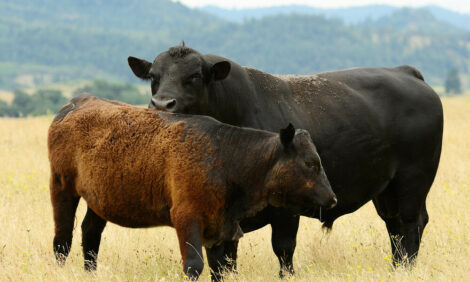



Consistent Application With New Manure Spreader
MANITOBA, CANADA - Anecdotal evidence suggests manure spreaders equipped with vertical beater bars are emerging as a superior alternative to conventional spreaders equipped with horizontal beater bars for the application of solid livestock manure fertiliser, Bruce Cochrane writes.|
University news is a Wonderworks Canada Production. Visit us at www.universitynews.org |
As part of an annual soil and manure management field clinic in Portage la Prairie in August, scientists demonstrated manure spreaders equipped with vertical beater bars and conventional spreaders equipped with horizontal beater bars.
The beater bars on the traditional style spreader have a horizontal orientation with paddles attached at some distance from each other at the back of the spreader whereas the vertical units have the beater bars oriented closer together vertically leaving a smaller gap for the manure to be pushed through.
Mitchell Timmerman, a nutrient management specialist with Manitoba Agriculture, Food and Rural Initiatives, says the flightings on the vertical beater bars create a massive cutting effect on the manure resulting in an improved end product.
Mitchell Timmerman-Manitoba Agriculture, Food and Rural Initiatives
The horizontal beater bars are going to fling the manure on the land in a more haphazard fashion.
The manure going into the spreader isn't much different coming out the back.
There are chunks of predominantly bedding versus bedding mixed with the animal excrement and as a result that creates a very heterogeneous or non-uniform application in the field.
The vertical system with these design changes generates a more uniform application because the manure isn't the same coming out as it went in.
As it's forced through the small space between the beaters that manure is chopped up, lumps of predominantly bedding or lumps of concentrated true manure with less bedding end up getting properly mixed together and that results in a more uniform product out the back of the spreader.
Mr Timmerman says producers have pointed out the larger capacity of the newer vertical units justifies hauling manure a longer distance, better distributing manure nutrients across the farm's land base.
TheCattleSite News Desk


